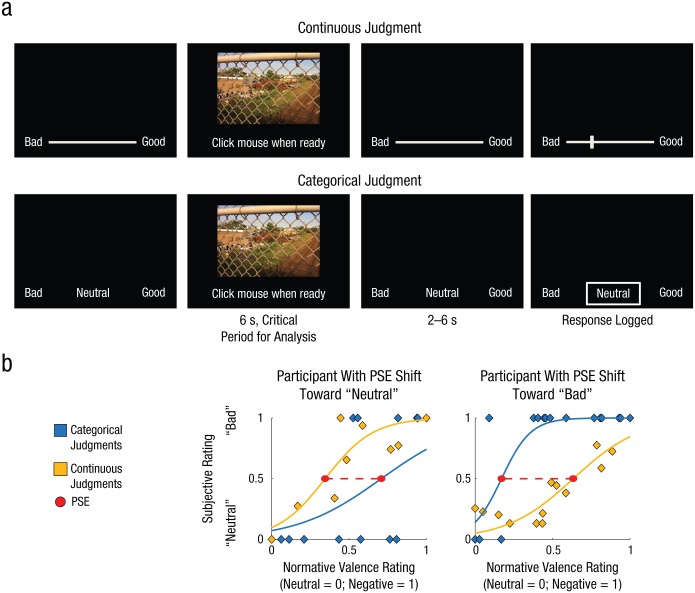Fig. 3.
Study 2: task design and examples of categorization-related shifts in the perception of emotion in the self. Each participant judged his or her own affective experience in response to graphic images using a continuous scale in some blocks and a categorical scale in others (a). Each image was presented for 6 s, during which time participants were asked to indicate when they had made a decision concerning the affect they experienced. Next, following a 2- to 6-s interval, participants recorded their judgment. For each condition, the average subjective response (“neutral” = 0, “bad” = 1) for each normative rating level was then calculated, and the point of subjective equivalence (PSE) was identified. The difference in the PSE between the conditions indexed the participant’s categorization-related shift. In (b), the plot on the left shows results for a participant with a categorization-related shift (dashed red line) toward “neutral,” and the plot on the right shows results for a participant with a categorization-related shift toward “bad.”

